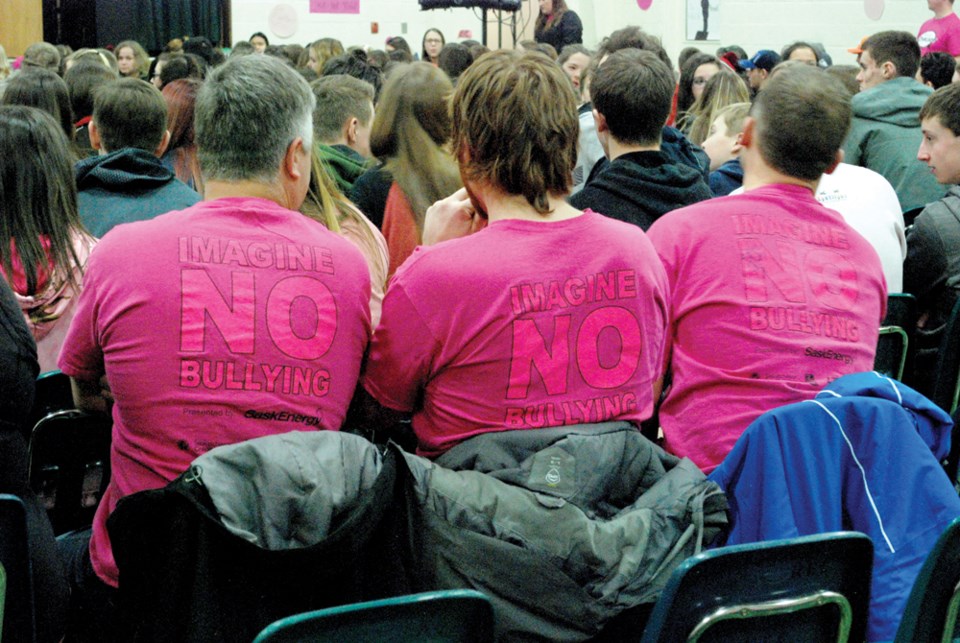It is a problem that LeRoy School students wanted to address themselves.
And thanks to the LeRoy Student Representative Council (SRC), the fourth annual Pink Day in LeRoy on March 15 saw 500 students pack the school gym to speak about bullying.
Students from LeRoy Muenster, Quill Lake, Imperial, Lanigan, Watson, and Drake took in two anti-bullying presentations from special guests, Wali Shah and Blake Fleischacker, as well as group presentations from the LeRoy students and Katrina Alarilla speaking about being bullied in the Philippines before moving to Canada.
Alarilla performed a song she wrote about the experience.
Planning Pink Day has been a six month venture for the SRC, advisors, and staff, says LeRoy Principal Annette Zentner. However, while the adults worked to facilitate the event, “getting PINK Day off the ground and carried through to the end is filled with numerous leadership opportunities for our student leaders on SRC and within the student body,” says Zentner.
“The students really do it all. They were committed, hardworking and enthusiastic about this entire event.”
SRC Co-president Wyatt Panter says it is all about making choices.
“Being kind to others by making that choice can change their life.”
Like the students said in their presentation, young people make choices everyday, from how they wear their hair to whether to drink orange juice before or after brushing their teeth.
Students can also make the choice to appreciate one another, which was the focus of Fleischacker’s presentation to the students.
Fleischacker encourages students to find innovative, creative, and unique ways of showing appreciation so that it is not awkward to deliver but exciting to deliver.
“What it can do for students at schools and groups of friends is that it gives a choice to choose how do they want to interact with each other in person and online.”
Fleischacker says students can choose ways of hurting themselves and others both in person and online as well as helping themselves and others.
The three main reasons people do not show appreciation is they think it is weird, they forget, or they do not know what to say, says Fleischacker.
The first step, he says, is just sending that message saying thank you. That starts the conversation, says Fleischacker.
Especially in a small community where people know each other for a long time, things can go unsaid.
“Sometimes people assume their friends and family know how much they appreciate them or the impact they’ve had but those friends or family members might not have ever heard the specific impact they’ve had.”
This appreciation can also have a wider reach, says Fleischacker, since employers can often have that problem in relation to employee retention. People even leave relationships because of feeling under appreciated.
Adding that appreciation into everyday life is the goal, says Fleischacker, which can lead to people feeling appreciated and passing it on.
“This is a simple, small proactive approach to saying, what if we build this into our day to day life in a way that’s sincere, thoughtful, and relevant...more of it will happen which can ripple out.”




